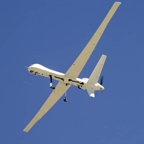Synchronous: The Other Serial Communications
Synchronous serial communications is a technology that you may have heard of, but perhaps have not used. It is usually employed when large amounts of data are required to be transmitted serially, often at high data rates. This is done by “framing” a stream of serial data between certain “start” and “stop” flags specific to the synchronous protocol used.
My first experience with synchronous serial was around 1987 when I was working as an Applications Engineer for a company that made STD Bus products. Part of our STD Bus product offering at the time was a sync board designed using a Zilog serial communications controller. I recall that I was amazed at the number of different modes of operation available for this chip and at the amount of knowledge and time required to correctly program the large number of registers in the device (the user manual for the IC is over 300 pages).
Luckily, using synchronous serial communications is much easier now given the tools that Sealevel provides. In fact, to make using their serial controller ICs easier, Zilog has long recommended Sealevel on their website as “a leading provider of serial communications tools, utilities, drivers and turn-key systems.” Key in many applications is the Driver" href="https://www.sealevel.com/support/seamac-software-overview/" target="_blank" rel="noopener noreferrer">SeaMAC V4 software driver, which supports the most popular synchronous protocols including HDLC/SDLC, bisync, monosync, and RAW modes. We also supply a Sealevel utility called WinSSD that greatly simplifies testing and debugging.
As a result of our work in this area, we’ve been involved in a large number of interesting applications that use our synchronous products, many of them related to the military. One example is a project we worked on cooperatively with the Defense Information Systems Agency (DISA) to interface military laptops to tactical radios to allow data communication through the radios in addition to standard voice operation. We developed the ACC-188, a high-throughput USB to synchronous serial product, to do just that. Combined with PDA-184, the application software DISA developed for the laptop, the ACC-188 provides the warfighter the ability to send email, text messaging, GPS maps, and coordinates using their laptops to increase their effectiveness and safety on the battlefield.
 Sealevel PCI and PC/104 synchronous boards are also used to interface with radio receivers to connect ground computer systems with aircraft including Unmanned Aerial Vehicles (UAVs). Today, UAVs are widely used by the U.S. military for both surveillance and offensive missions in many parts of the world. In these applications, large amounts of data are required for the aerial images from the aircraft to be transmitted to the ground for immediate action. Even given the large file sizes, products like our 5104 low profile PCI card are capable of adequate bandwidth with data rates up to 10Mbps.
Sealevel PCI and PC/104 synchronous boards are also used to interface with radio receivers to connect ground computer systems with aircraft including Unmanned Aerial Vehicles (UAVs). Today, UAVs are widely used by the U.S. military for both surveillance and offensive missions in many parts of the world. In these applications, large amounts of data are required for the aerial images from the aircraft to be transmitted to the ground for immediate action. Even given the large file sizes, products like our 5104 low profile PCI card are capable of adequate bandwidth with data rates up to 10Mbps.
Even though synchronous serial is a relatively mature method of communication, it seems that almost every day we are talking to new customers about sync products. Given the long history, installed user base, and high data rates, it is a safe bet that synchronous serial communications will be around a lot longer. And it is also a safe bet that Sealevel will continue developing new, innovative sync products to meet our customer’s applications requirements.
Categories:
